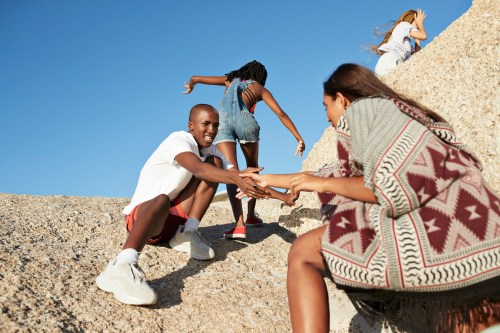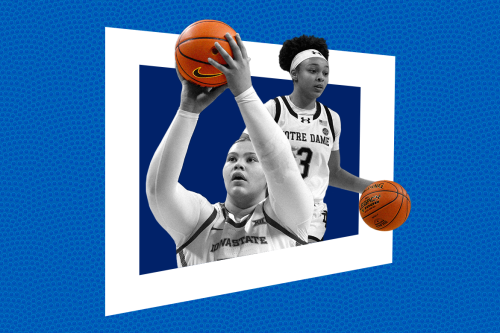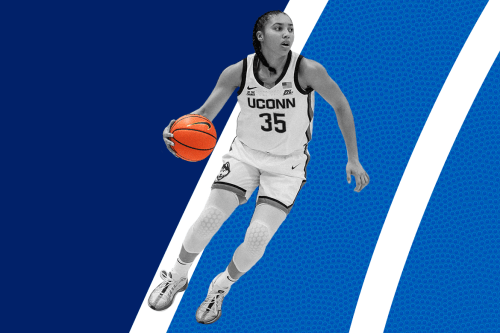“Adventure travel is a lot like a boys club,” says Evita Robinson, founder of Nomadness Travel Tribe, an online community for travelers of color. “Actually, it’s a lot like a white boys club.” Take a peek at the marketing materials for most major outdoor sporting brands or travel brochures, and the overwhelming number of rugged white guys climbing a mountain or white-water rafting just proves her point. “It’s a whole aesthetic—it’s a culture, really,” Robinson says of the overwhelmingly white industry. “And that’s what needs to be broken.”
Experts in This Article
Evita Robinson is the founder of Nomadness Travel Tribe, an online community for travelers of color.
James Edward Mills, is a journalist, the author of “The Adventure Gap,” and the founder of The Joy Trip Project.
Lauren Gay is the creator of Outdoorsy Diva, a platform dedicated to empowering Black women through travel and outdoor recreation.
Teresa Baker is an environmental activist fighting for more diversity and inclusion in the outdoor sports and adventure travel industry.
Though people of color are vastly underrepresented in the outdoor sports industry—which includes activities like hiking, biking, kayaking, skiing, scuba diving, and mountain climbing—it doesn’t mean they’re not there. According to the 2020 Diversity in Adventure Travel survey conducted by the Adventure Travel Trade Association, 13 percent of U.S. outbound adventure travelers are Black, and in a recent Nomadness survey of 5,000 BIPOC, “adventure travel” was the second-most-popular travel preference.
“We may not be the majority of the people who are there, but we’re still there.”—Evita Robinson
“We may not be the majority of the people who are there, but we’re still there,” says Robinson. “That’s something that the industry gets wrong. They don’t realize that adventure and outdoors is also something that is on our mind.”
A lack of representation in the industry has created significant barriers to entry for the Black community to feel welcome in outdoor spaces, which is why Robinson, along with other BIPOC adventure travel influencers and activists, is working to change things.
A lack of representation in the outdoor industry presents major issues for BIPOC inclusion
Visibility and representation have a long way to go. In 2017, Kellee Edwards was the first Black woman in the Travel Channel’s 30-year history to host a show on the network. And in two and a half decades, Outside magazine has only featured three Black women on its cover. “There have always been people of color in the outdoors—that goes without saying—but the question is whether or not we actually see them,” says James Edward Mills, author of The Adventure Gap and founder of The Joy Trip Project.
Considering the health disparities that face Black communities in the United States, limiting exposure to outdoor activities—many of which, like hiking and swimming, provide free access to fitness—is a big problem. “If you don’t grow up doing something and see people like you doing it, why would you do it?” says Lauren Gay, the woman behind Outdoorsy Diva, a platform dedicated to empowering Black women through travel and outdoor recreation. “Because you don’t know what you don’t know. If something wasn’t marketed to you or put in front of you, and you didn’t grow up doing it, how would you even know about it? It all comes back to representation and exposure.” She wishes more people in her community were aware of the fact that it costs $80 a year to have unlimited access to state parks, for instance, or that many of them offer free, ranger-led programming in hiking, kayaking, and camping.
But even once people of color get inside of these parks, it’s rare to see anyone who looks like them. Case in point? The National Park Service is 83 percent white. “That’s one hell of a message to send me—whose tax dollars are paying their salaries—that it’s not important to have people who look like me on their staff,” says Teresa Baker, an environmental activist fighting for diversity and inclusion in the outdoor sports industry.
“People of color have always been in the outdoors.” —Teresa Baker
“People of color have always been in the outdoors,” says Baker. “We’ve always created and lived in these spaces, but our voices have been removed and replaced with voices that get all the praise, which are well-known white athletes.”
With that in mind, groups like Nomadness, Outdoorsy Diva, The Joy Trip Project, and individuals like Baker (among many others) are working to increase the Black community’s representation in outdoor spaces by hosting trips and starting groups where people of color will see themselves and feel welcome. But for a real shift to happen, they say, more work needs to be done from the larger brands in the industry. “When we call out brands who don’t represent us, they’ll say, ‘Well, you know our audience doesn’t really respond well to that,’ and that can’t be a reason,” says Gay. “It’s not going to change unless they push it. The more they do it, the more they’ll be able to grow their following beyond the narrow-minded people who were used to only seeing people who looked like them.”
Gold Medal Couple Tara Davis-Woodhall and Hunter Woodhall Talk Marriage, Motivation, and Their Next Chapter With Nike
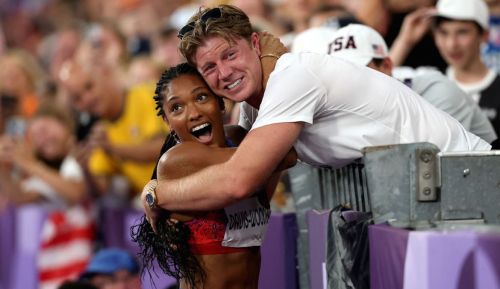
Coach Kara Lawson Wants You to ‘Handle Hard Better’—and Here Are 3 Ways to Do Just That
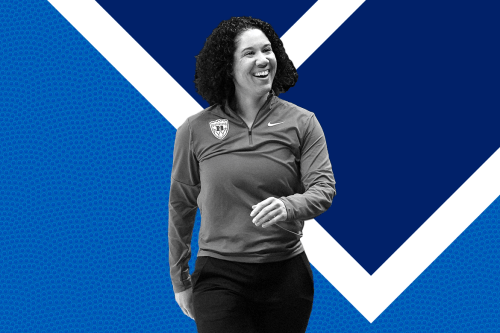
JuJu Watkins Leaves March Madness With ACL Tear—and This Knee Injury Is More Common Than You Think
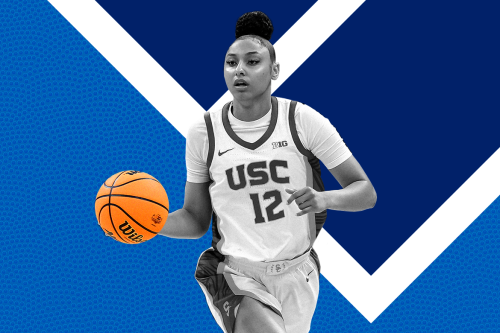
In other words, representation matters. As Mills puts it, “The minute you see better representation, you get higher degrees of interest, which leads to greater rates of participation. All of this will help to make things exponentially better.”
Barriers to entry have kept the BIPOC community from feeling welcome in outdoor spaces
Running alongside this lack of representation is an undercurrent of systemic racism that has kept the Black community from feeling welcome in predominantly white outdoor spaces. “There’s also inherent fear,” says Gay. “If you have an interest in kayaking, and every group that you find looks to be 100% white, as a black person—in our climate, in this country, and our personal experience—for some of us, that’s a barrier. You’re not going to feel comfortable going into spaces where you’re not sure how you’re going to be received.” She explains that sometimes, these feelings go beyond just “discomfort,” and leave her feeling downright unsafe. Before she goes into any outdoor space for the first time, for example, she does a deep dive into the demographics so that she can be mentally and physically prepared in case she isn’t welcome. “That’s not something that white people ever have to think about,” she says.
“You’re not going to feel comfortable going into spaces where you’re not sure how you’re going to be received.”—Lauren Gay
According to Robinson, there are certain stereotypes that still exist—”Black people don’t swim,” “Black people don’t go to cold places”—that are categorically untrue, yet they still persist in making the Black community feel unwelcome in outdoor activities. “It’s easy to assume these things when you don’t see a lot of people from my community at swim clubs—but it’s because we were historically barred from being a part of these clubs,” says Baker. He explains that because racism and segregation have traditionally left Black people out of mainstream outdoor and adventure sports—they weren’t allowed in national parks until the Civil Rights Act passed in 1964, and the United States has a well-documented history of segregating public pools—they’ve created groups of their own where they can, he says, “swim, hike, and climb together in a welcoming environment.”
Change needs to happen behind the scenes, too—namely, at large brands in the adventure industry. That’s because making people feel included starts at the top. “To hell with what it’s like to actually get into these spaces and show your talents and your skills and all these other things. There is a psychological barrier of entry that has to happen first,” says Robinson. In order for real change to happen, Black people need a seat at the table. “You need an advocate at the other side of the phone to see that this is of interest and that you qualify to be there just as much as everyone else, if not more,” she says. More representation at the corporate level will allow members of the BIPOC community to know that their interests are being prioritized, and make it clear once and for all that they belong.
Things are changing, but there’s still a way to go
“If you were to take a look at social media four years ago, you’d think that it’s only white men—and occasionally white women—who hike, ski, or climb,” says Baker. “That’s changing now. I think the outdoor industry is finally listening to us, and realizing that the demographic shift that is happening in this country is going to affect their bottom line if they don’t start to include us.”
These changes, she says, have come by way of increased representation in social media campaigns and in the corporate suites of major outdoor brands. Over the last 10 years, The North Face’s Explore Fund has focused on increasing diversity in the outdoors by funding local and community groups working in that space. “2020 really gave us an opportunity to think about redoubling our efforts in committing to focusing both our advocacy and philanthropy efforts to inviting new people into the outdoors, and being a part of creating an outdoors that looks different than how it does today,” says Amy Roberts, the brand’s senior director of brand impact and product sustainability.
What’s more, alienating Black customers is simply bad for business, says Mills. “The biggest stereotype is that people of color are poor and that any effort to improve the representation of people of color has got to come from lower-income urban communities. That’s not true,” he adds, pointing to the fact that the BIPOC community pours $19 billion into the adventure travel industry each year. But things are changing, says Baker: “Brands are finally understanding that they cannot have a sustainable future without including these underrepresented communities.”
Still, says Mills, there’s still much more that needs to be done. “The actual effort is coming from individuals and from BIPOC-facing institutions,” he says. “It’s not coming from the industry in the way that I think it should.”
The silver lining is that this long-overdue dialogue is finally happening—and with it, bringing awareness and action to the problem. “There’s a positive side of this, because there’s a massive opportunity to change, broaden, and expand the story,” says Robinson. “Which, really, is just telling the truth.”
Oh hi! You look like someone who loves free workouts, discounts for cult-fave wellness brands, and exclusive Well+Good content. Sign up for Well+, our online community of wellness insiders, and unlock your rewards instantly.
Sign Up for Our Daily Newsletter
Get all the latest in wellness, trends, food, fitness, beauty, and more delivered right to your inbox.
Got it, you've been added to our email list.
